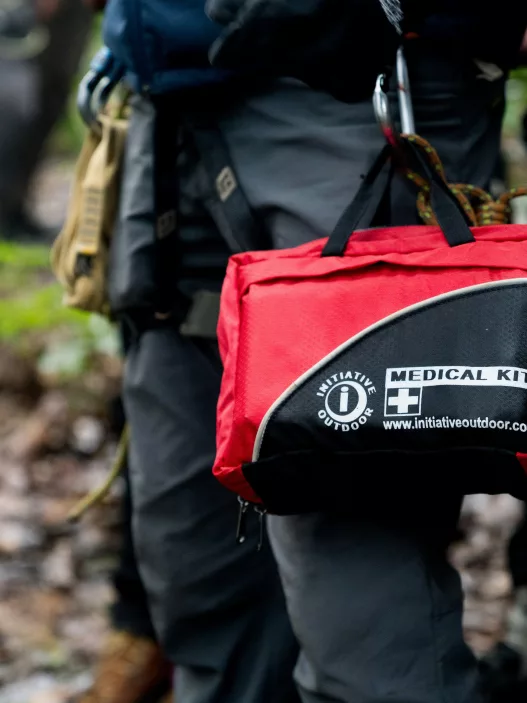Getting lost on a challenging hike can turn an enjoyable adventure into a dangerous situation. Many experienced hikers struggle with advanced navigation techniques when facing difficult terrain, poor weather conditions, or complex trail systems.
Mastering advanced map reading skills requires understanding topographic features, combining traditional compass work with modern GPS technology, and developing systematic approaches to route planning. These skills become crucial when hiking remote areas where mobile signals fail and weather conditions change rapidly.
Proper navigation techniques extend beyond basic map reading to include understanding contour interpretation, bearing calculations, and error correction methods. The ability to solve real-world navigation problems whilst avoiding common mistakes separates confident hikers from those who rely purely on technology or guesswork.
Fundamentals of Topographic Maps
Topographic maps display terrain features through standardised symbols, contour lines that show elevation changes, and precise scales for accurate distance measurement. These three elements work together to create a detailed representation of the landscape that hikers can interpret for navigation.
Understanding Map Symbols and Legends
Topographic maps use standardised symbols to represent natural and human-made features across the landscape. The legend, typically located in the map’s margin, provides a complete key to interpreting these symbols.
Natural features appear in specific colours and patterns. Blue represents water bodies including rivers, lakes, and streams. Green indicates vegetation, with different shades showing forests, grasslands, and scrubland. Brown depicts elevation through contour lines and terrain features.
Human-made structures follow consistent conventions. Black lines represent roads, with different thicknesses indicating motorways, A-roads, and footpaths. Buildings appear as black rectangles or outlines. Red symbols often mark significant landmarks like phone boxes or post offices.
Boundaries and infrastructure use distinct markings. Dashed lines show footpaths and bridleways. Solid lines with different patterns indicate parish boundaries, national park borders, or property lines. Power lines appear as thin black lines with regular markings.
The legend varies slightly between different mapping agencies. Ordnance Survey maps use specific symbols that differ from international standards. Hikers should familiarise themselves with their map’s particular legend before heading out.
Deciphering Contour Lines and Elevation
Contour lines connect points of equal elevation, creating a two-dimensional representation of three-dimensional terrain. Each line represents a specific height above sea level, with the interval between lines remaining constant across the map.
Contour intervals typically range from 5 to 20 metres depending on the map scale. Every fifth line appears darker and includes elevation numbers. These index contours help hikers quickly identify height changes and calculate elevation gains.
Line spacing reveals slope steepness. Closely packed lines indicate steep terrain, whilst widely spaced lines show gentle gradients. Areas with no contour lines represent flat ground at the same elevation.
Terrain features create recognisable contour patterns. Ridges appear as elongated ovals with higher elevations in the centre. Valleys form V-shaped patterns pointing uphill. Circular patterns with decreasing elevations indicate peaks or hills.
Hikers can determine their approximate elevation by identifying nearby contour lines. The technique requires matching visible terrain features with contour patterns on the map.
Reading Scale and Distance Accurately
Map scale expresses the relationship between distances on the map and actual ground distances. Understanding scale enables accurate distance measurement and route planning.
Scale ratios appear as fractions like 1:25,000 or 1:50,000. The first number represents map distance, whilst the second shows ground distance. On a 1:25,000 map, one centimetre equals 250 metres on the ground.
Measuring techniques vary depending on available tools. Grid squares provide quick reference points, with each square representing one kilometre on 1:25,000 maps. String or paper strips help measure curved routes along footpaths.
Distance estimation becomes easier with practice. Hikers can memorise common measurements: thumb width often equals one kilometre on 1:25,000 maps. Pace counting combined with map distances helps verify navigation accuracy.
Scale affects detail levels shown on maps. Larger scales like 1:25,000 show more detail but cover smaller areas. Smaller scales like 1:50,000 cover larger areas with less detail.
Advanced Navigation Techniques
These techniques require practice with map and compass to master. Triangulation pinpoints exact position using three landmarks, bearing accuracy depends on proper compass technique, and terrain interpretation reveals hidden navigation clues.
Triangulation for Precise Location
Triangulation determines exact position by taking bearings to three identifiable landmarks. This technique works when a hiker knows their approximate location but needs precision for route planning.
The process begins with identifying three prominent features visible both on the map and in the field. Mountain peaks, distinctive ridges, or prominent buildings work best. These landmarks should be spread across different directions to create a triangle around the hiker’s position.
Using a compass, the hiker takes a bearing to the first landmark by pointing the direction-of-travel arrow towards it. They rotate the bezel until the magnetic needle aligns with the orienting arrow, then read the bearing from the index line.
This bearing must be converted to a back bearing by adding or subtracting 180 degrees. The hiker then places the compass on the map with the edge touching the landmark, rotating the entire compass until the orienting lines align with the map’s grid lines.
A pencil line drawn along the compass edge shows the back bearing. This process repeats for all three landmarks. The point where all three lines intersect reveals the precise location.
Taking and Following Accurate Bearings
Accurate bearings require steady compass technique and attention to magnetic declination. Small errors in bearing can lead to significant navigation mistakes over long distances.
Magnetic declination affects all compass readings. This is the difference between magnetic north and grid north, varying by location. Hikers must adjust their compass or calculations accordingly using the declination value printed on their map.
When taking a bearing, the hiker holds the compass level and steady. They point the direction-of-travel arrow towards the target, then rotate the bezel until the magnetic needle sits within the orienting arrow outline.
Following a bearing requires regular compass checks whilst walking. The hiker should take intermediate bearings to prominent features along the route rather than attempting to follow one bearing for kilometres.
Wind, fatigue, and rough terrain cause natural drift from the intended line. Checking the compass every 50-100 metres prevents major route deviations.
Interpreting Complex Terrain Features
Contour lines reveal terrain details that affect route choice and navigation strategy. Understanding how these lines represent three-dimensional features prevents route-finding errors.
Closely spaced contour lines indicate steep slopes. Widely spaced lines show gentler gradients. V-shaped contours pointing uphill mark valleys or gullies, whilst V-shapes pointing downhill indicate ridges or spurs.
Concentric circles represent hills or depressions. The centre shows the highest point for hills or lowest point for depressions. Tick marks on contour lines point towards lower elevations.
re-entrants appear as indentations in hillsides, often containing streams or offering sheltered routes. Spurs project outward from main ridges, providing elevated walking routes between valleys.
Cliff symbols show impassable terrain requiring route changes. Scree slopes appear as dotted patterns and indicate loose rock that affects walking speed and safety.
Utilising Compass and GPS in Conjunction
Modern navigation requires combining traditional compass skills with GPS technology to create redundant systems that work in all conditions. Proper synchronisation between map, compass, and GPS data ensures accurate positioning even when individual tools fail or provide conflicting information.
Synchronising Map and Compass
The navigator must first establish magnetic north on their compass before attempting any bearing calculations. They should hold the compass flat in their palm, away from metal objects that could interfere with the needle.
Setting up the compass:
- Place the map on a flat surface
- Align the compass edge with the desired route
- Turn the dial until the orienting lines match the map’s grid lines
- Rotate the entire compass until the needle aligns with the orienting arrow
The navigator should account for grid convergence when using Ordnance Survey maps. Grid lines point to grid north, not magnetic north, creating a small angular difference that increases with distance from the central meridian.
Taking accurate bearings requires the navigator to sight along the direction of travel arrow whilst keeping the magnetic needle aligned. They must remember that the bearing refers to the direction from their current position to the target, not the reverse.
Integrating GPS Data with Paper Maps
GPS coordinates must be converted to the same datum and coordinate system as the paper map. Most UK maps use British National Grid coordinates, whilst GPS devices often default to latitude and longitude or UTM coordinates.
Coordinate conversion process:
- Set GPS device to British National Grid (OSGB36)
- Record the eastings and northings
- Locate the corresponding grid square on the map
- Plot the position using the six-figure grid reference
The navigator should regularly mark their GPS position on the paper map using a pencil. This creates a visual track that helps identify navigation errors and provides backup positioning if the GPS fails.
GPS accuracy decreases in steep terrain, dense forests, and adverse weather conditions. The navigator must cross-reference electronic positions with visible landmarks and compass bearings to verify accuracy.
Correcting for Magnetic Declination
Magnetic declination represents the angular difference between magnetic north and true north at any given location. In the UK, magnetic declination varies between approximately 0° and 3° west, changing gradually over time.
Declination correction steps:
- Determine local magnetic declination from the map margin
- Add westerly declination to magnetic bearings for true bearings
- Subtract easterly declination from magnetic bearings for true bearings
- Update declination values annually as they change over time
The navigator should use the declination value printed on their specific map rather than general estimates. Ordnance Survey maps display the annual rate of change, allowing calculation of current declination from the map’s publication date.
Some compass models include adjustable declination settings that automatically compensate for local variation. The navigator sets the declination once, and the compass automatically provides corrected readings for the remainder of the expedition.
GPS devices typically display true bearings, whilst compass readings show magnetic bearings. The navigator must apply declination corrections when comparing readings between the two instruments to ensure consistency.
Route Planning for Challenging Hikes
Effective route planning requires systematic analysis of terrain features, elevation changes, and potential risks. Hikers must identify multiple exit points and backup routes before entering demanding wilderness areas.
Analysing Terrain and Elevation Profiles
Topographic maps reveal crucial terrain information through contour lines, which indicate elevation changes and gradient steepness. Closely spaced contour lines signal steep ascents or descents that require additional time and energy.
Elevation profiles help hikers calculate total ascent and descent distances. A route with 1,000 metres of elevation gain typically requires an additional hour compared to flat terrain of the same distance.
Key terrain features to identify:
- Ridge lines and saddles
- Water crossings and seasonal streams
- Loose scree slopes or unstable ground
- Cliff faces and drop-offs
Weather patterns change dramatically with elevation. Temperatures drop approximately 2°C per 300 metres of altitude gain. Wind exposure increases significantly on exposed ridges and peaks.
Seasonal considerations affect route difficulty. Spring snowmelt creates swollen rivers and unstable slopes. Autumn weather brings shorter daylight hours and unpredictable conditions.
Assessing Potential Hazards
Rockfall zones typically occur below cliff faces and in narrow gullies. These areas require rapid passage during stable weather conditions, preferably in early morning when freeze-thaw cycles minimise loose rock movement.
Water crossings present serious risks during high flow periods. Hikers should identify upstream weather conditions and seasonal snowmelt patterns that affect river levels.
Environmental hazards to evaluate:
- Avalanche terrain – slopes between 30-45 degrees
- Lightning exposure – exposed ridges and peaks
- Flash flood potential – narrow canyons and drainage areas
- Extreme weather windows – seasonal storm patterns
Wildlife encounters require specific preparation in certain regions. Bear activity peaks during berry seasons and salmon runs. Venomous snake activity increases during warmer months.
Navigation challenges include areas with poor visibility, complex terrain, or unreliable GPS signals. Dense forests, deep canyons, and severe weather conditions can disorient even experienced hikers.
Creating Alternative and Escape Routes
Primary routes should include multiple bailout points at regular intervals. Escape routes must lead to roads, populated areas, or emergency services within reasonable hiking distance.
Emergency evacuation routes differ from standard hiking paths. These routes prioritise accessibility for rescue teams over scenic value or hiking enjoyment.
Essential escape route criteria:
- Maximum 4-6 hours to reach assistance
- Suitable for injured hikers or reduced mobility
- Accessible during various weather conditions
- Marked waypoints for emergency communication
Alternative routes provide options when primary paths become impassable. Weather, seasonal closures, or unexpected hazards may force route changes during the hike.
GPS coordinates for key decision points enable precise navigation during emergencies. Hikers should record waypoints for major trail junctions, water sources, and shelter locations.
Communication dead zones require special consideration. Satellite communicators or emergency beacons become essential in areas without mobile phone coverage.
Real-World Navigation Problem Solving
Hikers face two critical navigation challenges that require immediate adaptation: losing marked trails and weather changes that affect visibility and route conditions. These situations demand specific techniques and backup planning strategies.
Navigating Off-Trail and Unmarked Routes
Off-trail navigation requires systematic approach using multiple reference points. Hikers should identify three landmarks visible from their position before moving forward.
Handrail technique involves following natural features like streams, ridgelines, or valley floors that guide direction. These features act as continuous reference points when paths disappear.
Triangulation becomes essential for position confirmation. Hikers take compass bearings to two known peaks or landmarks, then plot these lines on their map where they intersect.
Pacing and timing help track distance travelled. Most hikers cover 2-3 miles per hour on moderate terrain, adjusting for elevation gain and surface conditions.
Contour navigation keeps hikers at consistent elevation when crossing slopes. This technique reduces energy expenditure whilst maintaining known altitude reference points.
Catching features like roads, rivers, or prominent ridges should be identified before departure. These act as safety nets if navigation fails completely.
Adjusting for Changing Weather Conditions
Weather changes demand immediate navigation adjustments and route modifications. Fog reduces visibility to mere metres, making compass work essential for any movement.
Dead reckoning becomes primary navigation method in poor visibility. Hikers must track exact bearing, distance, and time between known points.
Wind affects compass accuracy by moving the needle or influencing the hiker’s stance. Steady the compass with both hands and take multiple readings for verification.
Rain makes paper maps unreadable without proper protection. Waterproof map cases or plastic sleeves prevent damage whilst maintaining usability.
Escape routes should be identified before weather deteriorates. These predetermined paths lead to lower elevations, sheltered valleys, or known safe areas.
Lightning requires immediate descent from exposed ridges and peaks. Hikers must know alternative routes through protected terrain like dense forests or valley bottoms.
Avoiding Common Navigation Errors
Navigation mistakes compound quickly in challenging terrain, leading to dangerous situations. Drift occurs when hikers unconsciously deviate from their intended bearing, whilst map-ground discrepancies arise from outdated information or interpretation errors.
Recognising and Correcting Drift
Drift represents the gradual deviation from an intended compass bearing during navigation. This phenomenon occurs naturally as hikers unconsciously adjust their path to avoid obstacles or follow easier terrain.
Signs of drift include:
- Terrain features appearing in unexpected locations
- Compass readings differing from intended bearing by more than 10 degrees
- Estimated travel time not matching actual progress
Hikers should check their compass bearing every 100-200 metres in poor visibility. Dense forest or complex terrain requires more frequent checks.
Correction techniques:
- Stop immediately when drift is suspected
- Take a back-bearing to confirm current position
- Identify the last known certain position on the map
- Plot a new route from the corrected position
Weather conditions worsen drift tendencies. Wind, rain, or snow cause hikers to unconsciously lean or adjust their stance, affecting their natural walking direction.
Managing Discrepancies Between Map and Ground
Map-ground discrepancies occur when the physical landscape differs from cartographic representation. These differences stem from outdated surveys, seasonal changes, or human modifications to terrain.
Common discrepancies include:
- Missing or relocated footpaths
- Changed vegetation boundaries
- New or demolished structures
- Altered watercourse routes
Hikers should verify their map’s publication date and check for recent updates. Ordnance Survey maps undergo regular revision, but some features may lag behind reality.
Resolution strategies:
- Compare multiple terrain features rather than relying on single landmarks
- Use contour lines to confirm elevation changes
- Cross-reference with GPS coordinates when available
- Consult local hiking groups for recent route condition reports
Seasonal variations affect map accuracy. Spring snowmelt may create temporary streams not shown on maps. Autumn leaf fall can obscure path markers or create false trails.
Continuing to Improve Map Reading Skills
Map reading proficiency develops through deliberate practice in different terrains and learning from navigation errors. Experienced hikers regularly challenge themselves with unfamiliar environments whilst systematically analysing their mistakes to refine their techniques.
Practising in Varied Environments
Hikers should seek different terrain types to develop comprehensive map reading abilities. Mountainous regions with steep contours challenge elevation interpretation skills. Forested areas test the ability to identify subtle landscape features when visibility is limited.
Coastal paths require understanding tidal influences on route planning. Moorland presents challenges with sparse landmarks and potential weather changes. Urban fringe areas help develop skills in reading man-made features alongside natural terrain.
Practice sessions should focus on specific skills rather than general navigation. One session might concentrate on bearing accuracy using a compass and map together. Another might emphasise distance estimation by pacing between known points.
Weather conditions add complexity to map reading practice. Fog forces greater reliance on compass bearings and precise contour interpretation. Heavy rain tests map protection skills and decision-making under pressure.
Regular practice in familiar areas builds confidence before tackling unknown terrain. Local hills and paths provide safe environments for testing new techniques without significant risk.
Learning from Navigation Mishaps
Navigation errors provide valuable learning opportunities when analysed systematically. Recording mistakes in a hiking journal helps identify recurring problems and track improvement over time.
Common errors include misidentifying features on the ground that appear similar to map symbols. Rivers, ridges, and valleys can look different in reality than their representation on paper. Bearing mistakes often result from magnetic declination errors or compass handling problems.
Time and distance miscalculations frequently occur when hikers underestimate terrain difficulty. Steep ascents take longer than flat ground, whilst rough terrain slows progress significantly compared to paths.
Post-hike analysis should examine decision points where navigation went wrong. Identifying the exact moment confusion began helps prevent similar mistakes. Weather conditions, fatigue levels, and group dynamics all influence navigation accuracy.
Discussing errors with experienced hikers provides different perspectives on problem-solving approaches. Navigation courses and workshops offer structured environments for learning from others’ mistakes alongside personal experiences.
Frequently Asked Questions
Successful navigation in challenging terrain requires mastering specific technical skills and understanding fundamental principles. These common queries address critical aspects of topographic interpretation, skill development, and technology integration for advanced hikers.
What techniques can be employed to effectively interpret topographic maps in complex terrain?
Contour line analysis forms the foundation of topographic interpretation. Hikers should identify elevation changes by examining contour spacing, with closely spaced lines indicating steep terrain and widely spaced lines showing gentle slopes.
Terrain association involves connecting map features to visible landscape elements. This technique requires matching ridgelines, valleys, and prominent features on the map with actual terrain observations.
Back-bearing verification helps confirm location accuracy. Hikers take compass bearings from known landmarks and plot reverse bearings on the map to triangulate their position.
Handrail navigation utilises linear features like streams, ridges, or valleys as natural guides. These features provide continuous reference points and help maintain direction in complex terrain.
Which navigation skills are essential for safe backcountry exploration and how can one develop them?
Compass proficiency requires understanding magnetic declination and bearing calculations. Hikers must practise taking and following bearings, adjusting for local magnetic variation from true north.
Pace counting enables distance estimation without GPS reliance. Individual step measurements over known distances help establish personal pace factors for different terrain types.
Micro-navigation skills involve short-distance precision movement. This includes identifying small terrain features, vegetation changes, and subtle elevation variations within 100-metre sections.
Regular practice sessions in familiar terrain build confidence and skill retention. Hikers should progressively challenge themselves with more complex navigation scenarios before attempting difficult routes.
How can one select the best map scale for a specific hiking adventure to ensure accuracy and reliability?
1:25,000 scale maps provide optimal detail for technical hiking and scrambling routes. These maps show individual boulders, small streams, and precise contour detail necessary for complex terrain navigation.
1:50,000 scale maps suit long-distance hiking and general route planning. They offer adequate detail whilst covering larger geographical areas on a single sheet.
Route complexity determines appropriate scale selection. Technical scrambles, off-trail hiking, and poor visibility conditions require more detailed 1:25,000 maps.
Terrain steepness influences scale requirements. Gentle terrain permits coarser scales, whilst steep or cliff-heavy areas demand fine-scale detail for safety.
What are recommended practices for utilising GPS technology, such as Gaia GPS, in conjunction with traditional map reading?
GPS serves as a backup navigation tool rather than primary reference. Hikers should maintain continuous map awareness whilst using GPS for position confirmation and route tracking.
Battery management requires carrying spare power sources and enabling power-saving modes. GPS units should be switched off between position checks to conserve battery life.
Waypoint marking at key decision points creates digital breadcrumbs. This includes marking trail junctions, water sources, and potential emergency exit routes.
Offline map downloads ensure functionality in areas without mobile coverage. Hikers must download relevant map sections before departure and verify data integrity.
What fundamental principles should be followed to enhance map readability during challenging hikes?
Map protection using waterproof cases or lamination prevents damage from weather exposure. Proper storage in accessible pockets enables quick reference without stopping.
Orientation alignment involves positioning the map to match actual terrain direction. This technique, called “setting the map,” eliminates mental rotation and reduces navigation errors.
Thumb tracking maintains continuous position awareness. Hikers keep their thumb on their approximate map position, updating it regularly as they progress.
Feature identification prioritises recognisable landmarks over subtle terrain changes. Prominent ridges, stream junctions, and distinctive peaks provide reliable reference points.
Could you outline the ‘4 D’s of navigation’ and their significance in mastering advanced navigation?
Direction involves establishing and maintaining intended travel bearing. This includes compass use, landmark identification, and course correction techniques for staying on route.
Distance measurement combines pace counting, time estimation, and terrain assessment. Accurate distance tracking prevents overshooting objectives and helps identify navigation errors.
Destination recognition requires identifying target features from map study. Hikers must visualise how objectives will appear from various approach angles and distances.
Description encompasses comprehensive route planning and hazard identification. This includes escape routes, alternative paths, and potential obstacles that might affect navigation decisions.









